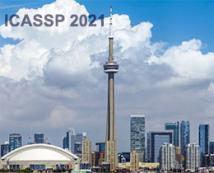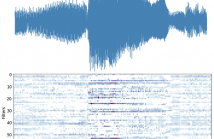
ICASSP 2021 - IEEE International Conference on Acoustics, Speech and Signal Processing is the world’s largest and most comprehensive technical conference focused on signal processing and its applications. The ICASSP 2021 conference will feature world-class presentations by internationally renowned speakers, cutting-edge session topics and provide a fantastic opportunity to network with like-minded professionals from around the world. Visit website.

- Read more about Real Number Signal Processing Can Detect Denial-of-Service Attacks
- Log in to post comments
Wireless communication systems are inherently vulnerable to adversarial attacks since malevolent jammers might jam and disrupt the legitimate transmission intentionally. Of particular interest are so-called denial-of-service (DoS) attacks in which the jammer is able to completely disrupt the communication. Accordingly, it is of crucial interest for the legitimate users to detect such DoS attacks. Turing machines provide the fundamental limits of today’s digital computers and therewith of the traditional signal processing. It has been
- Categories:
 14 Views
14 Views
- Read more about Suremap: Predicting Uncertainty in Cnn-Based Image Reconstructions Using Stein’s Unbiased Risk Estimate
- Log in to post comments
Convolutional neural networks (CNN) have emerged as a powerful tool for solving computational imaging reconstruction problems. However, CNNs are generally difficult-to-understand black-boxes. Accordingly, it is challenging to know when they will work and, more importantly, when they will fail.
- Categories:
 9 Views
9 Views
- Read more about A Quaternion-Valued Variational Autoencoder
- Log in to post comments
Deep probabilistic generative models have achieved incredible success in many fields of application. Among such models, variational autoencoders (VAEs) have proved their ability in modeling a generative process by learning a latent representation of the input. In this paper, we propose a novel VAE defined in the quaternion domain, which exploits the properties of quaternion algebra to improve performance while significantly reducing the number of parameters required by the network.
- Categories:
 11 Views
11 Views
- Read more about MULTIVIEW SENSING WITH UNKNOWN PERMUTATIONS: AN OPTIMAL TRANSPORT APPROACH
- Log in to post comments
In several applications, including imaging of deformable objects while in motion, simultaneous localization and mapping, and unlabeled sensing, we encounter the problem of recovering a signal that is measured subject to unknown permutations. In this paper we take a fresh look at this problem through the lens of optimal transport (OT). In particular, we recognize that in most practical applications the unknown permutations are not arbitrary but some are more likely to occur than others.
- Categories:
 10 Views
10 Views
- Read more about Deep Convolutional and Recurrent Networks for Polyphonic Instrument Classification from Monophonic Raw Audio Waveforms
- Log in to post comments
Sound Event Detection and Audio Classification tasks are traditionally addressed through time-frequency representations of audio signals such as spectrograms. However, the emergence of deep neural networks as efficient feature extractors has enabled the direct use of audio signals for classification purposes. In this paper, we attempt to recognize musical instruments in polyphonic audio by only feeding their raw waveforms into deep learning models.
- Categories:
 27 Views
27 Views
- Read more about BAITRADAR: A MULTI-MODEL CLICKBAIT DETECTION ALGORITHM USING DEEP LEARNING
- Log in to post comments
- Categories:
 22 Views
22 Views

The recognition of music genre and the discrimination between music and speech are important components of modern digital music systems. Depending on the acquisition conditions, such as background environment, these signals may come from different probability distributions, making the learning problem complicated. In this context, domain adaptation is a key theory to improve performance. Considering data coming from various background conditions, the adaptation scenario is called multi-source.
- Categories:
 8 Views
8 Views
- Read more about Moving object classification with a sub-6 GHz massive MIMO array using real data
- Log in to post comments
- Categories:
 4 Views
4 Views
- Read more about NON-PARALLEL MANY-TO-MANY VOICE CONVERSION BY KNOWLEDGE TRANSFER FROM A TEXT-TO-SPEECH MODEL
- Log in to post comments
In this paper, we present a simple but novel framework to train a non-parallel many-to-many voice conversion (VC) model based on the encoder-decoder architecture. It is observed that an encoder-decoder text-to-speech (TTS) model and an encoder-decoder VC model have the same structure.
- Categories:
 26 Views
26 Views